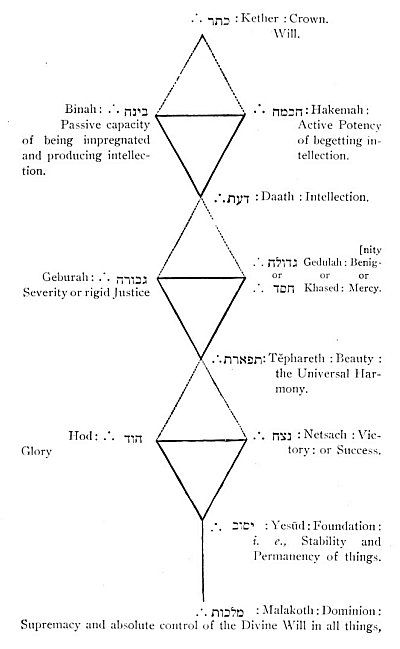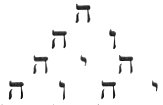The ancient ideas in respect to Light were perhaps quite as correct as our own. It does not appear that they ascribed to Light any of the qualities of matter. But modern Science defines it to be a flood of particles of matter, flowing or shot out from the Sun and Stars, and moving through space to come to us. On the theories of mechanism and force, what force of attraction here or
p. 744
repulsion at the Sun or at the most distant Star could draw or drive these impalpable, weightless, infinitely minute particles, appreciably by the Sense of Sight alone, so far through space? What has become of the immense aggregate of particles that have reached the earth since the creation? Have they increased its bulk? Why cannot chemistry detect and analyze them? If matter, why can they travel only in right lines?
No characteristic of matter belongs to Light, or Heat, or flame, or to Galvanism, Electricity, and Magnetism. The electric spark is light, and so is that produced by the flint, when it cuts off particles of steel. Iron, melted or heated, radiates light; and insects, infusoria, and decayed wood emit it. Heat is produced by friction and by pressure; to explain which, Science tells us of latent Caloric, thus representing it to us as existing without its only known distinctive quality. What quality of matter enables lightning, blazing from the Heavens, to rend the oak? What quality of matter enables it to make the circuit of the earth in a score of seconds?
Profoundly ignorant of the nature of these mighty agents of Divine Power, we conceal our ignorance by words that have no meaning; and we might well be asked why Light may not be an effluence from the Deity, as has been agreed by all the religions of all the Ages of the World.
All truly dogmatic religions have issued from the Kabalah and return to it: everything scientific and grand in the religious dreams of all the illuminati, Jacob Bœhme, Swedenborg, Saint-Martin, and others, is borrowed from the Kabalah; all the Masonic associations owe to it their Secrets and their Symbols.
The Kabalah alone consecrates the alliance of the Universal Reason and the Divine Word; it establishes, by the counterpoises of two forces apparently opposite, the eternal balance of being; it alone reconciles Reason with Faith, Power with Liberty, Science with Mystery; it has the keys of the Present, the Past, and the Future.
The Bible, with all the allegories it contains, expresses, in an incomplete and veiled manner only, the religious science of the Hebrews. The doctrine of Moses and the Prophets, identical at bottom with that of the ancient Egyptians, also had its outward meaning and its veils. The Hebrew books were written only to recall to memory the traditions; and they were written in Symbols
p. 745
unintelligible to the Profane. The Pentateuch and the prophetic poems were merely elementary books of doctrine, morals, or liturgy; and the hue secret and traditional philosophy was only written afterward, under veils still less transparent. Thus was a second Bible born, unknown to, or rather uncomprehended by, the Christians; a collection, they say, of monstrous absurdities; a monument, the adept says, wherein is everything that the genius of philosophy and that of religion have ever formed or imagined of the sublime; a treasure surrounded by thorns; a diamond concealed in a rough dark stone.
One is filled with admiration, on penetrating into the Sanctuary of the Kabalah, at seeing a doctrine so logical, so simple, and at the same time so absolute. The necessary union of ideas and signs, the consecration of the most fundamental realities by the primitive characters; the Trinity of Words, Letters, and Numbers; a philosophy simple as the alphabet, profound and infinite as the Word; theorems more complete and luminous than those of Pythagoras; a theology summed up by counting on one’s fingers; an Infinite which can be held in the hollow of an infant’s hand; ten ciphers, and twenty-two letters, a triangle, a square, and a circle,–these are all the elements of the Kabalah. These are the elementary principles of the written Word, reflection of that spoken Word that created the world!

Moe is the founder of GnosticWarrior.com. He is a father, husband, author, martial arts black belt, and an expert in Gnosticism, the occult, and esotericism.






